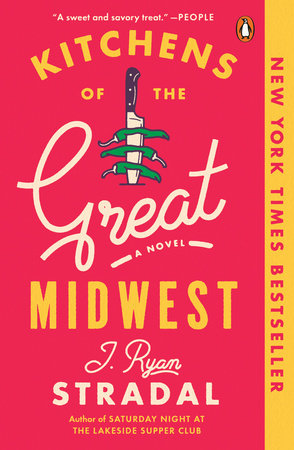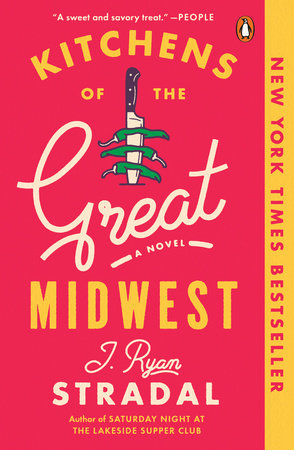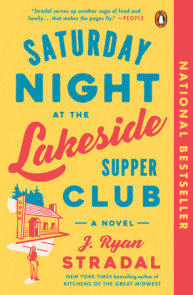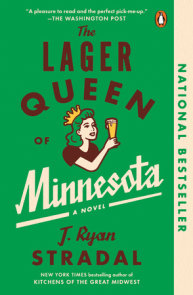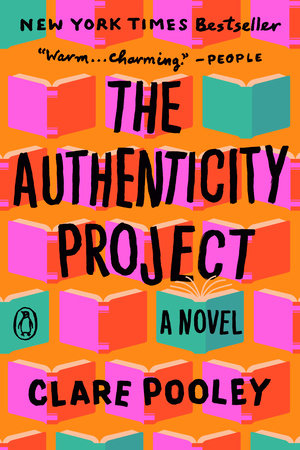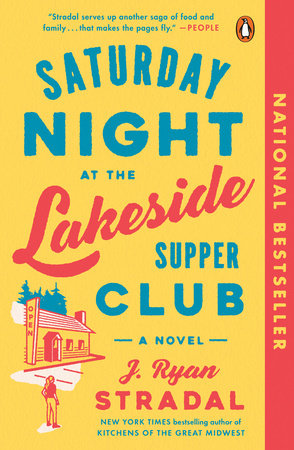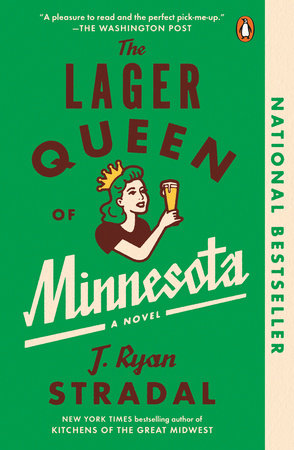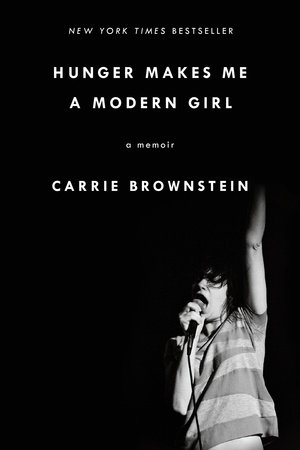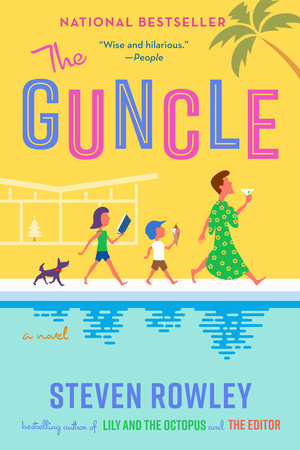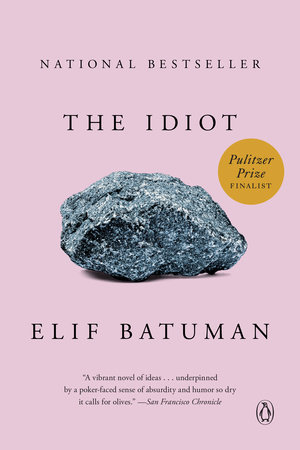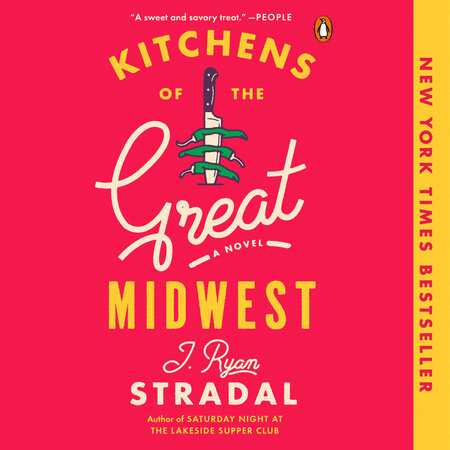

Kitchens of the Great Midwest
By J. Ryan Stradal
By J. Ryan Stradal
By J. Ryan Stradal
By J. Ryan Stradal
By J. Ryan Stradal
Read by Amy Ryan and Michael Stuhlbarg
By J. Ryan Stradal
Read by Amy Ryan and Michael Stuhlbarg
Category: Literary Fiction | Women's Fiction
Category: Literary Fiction | Women's Fiction
Category: Literary Fiction | Women's Fiction | Audiobooks
-
$18.00
Jun 07, 2016 | ISBN 9780143109419
-
Jul 28, 2015 | ISBN 9780698196513
-
Jul 28, 2015 | ISBN 9780698402973
607 Minutes

-
$18.00
Jun 07, 2016 | ISBN 9780143109419
-
Jul 28, 2015 | ISBN 9780698196513
-
Jul 28, 2015 | ISBN 9780698402973
607 Minutes
Buy the Audiobook Download:
YOU MAY ALSO LIKE
Praise
Praise for Kitchens of the Great Midwest:
“I read J. Ryan Stradal’s Kitchens of the Great Midwest on a flight. I buckled my seatbelt, opened the book and when I looked up again, the flight attendant was asking if I needed assistance getting off the plane. I didn’t, but now you know the spell this author can cast. He does it again with The Lager Queen of Minnesota.” —Elisabeth Egan for The New York Times
“An impressive feat of narrative jujitsu. . . that keeps readers turning the pages too fast to realize just how ingenious they are.”—The New York Times Book Review, Editor’s Pick
“This is a book that made me want to have a more full and colorful life, a life with cookbooks and a well-used kitchen, and to delight at all the goodness that can be put in front of us.”—Los Angeles Review of Books
“A sweet and savory treat.” —People
“The author’s gentle skewering of foodie snobs (from county fair doyennes to the vegan/gluten-free/soy-free police) is spot on, and the blend of humor, warmth, and longing that he uses to portray family relationships make the book insightful and endearing. Savor it page by page.”—Oprah.com
“Kitchens of the Great Midwest is a terrific reminder of what can be wrested from suffering and struggle – not only success, but also considerable irony, a fair amount of wisdom and a decent meal.”—Jane Smiley, The Guardian
“Warning: this will make you hungry. . . . You won’t be able to put it down. And it will up your kitchen game.”—The Skimm
“Garrison Keillor’s got nothing on [J. Ryan Stradal]!”—‘Here and Now’, NPR
“A tender coming-of-age story with a mix of finely rendered pathos and humor.”—Washington Post
“Stradal’s debut novel tackles foodie culture with all the finesse of a pastry chef…Reading Kitchens is all pleasure.” —LA Magazine
“[A] captivating debut novel. . . as surprising and satisfying as a great meal.”—Tampa Bay Times
“Foodies and those who love contemporary literature will devour this novel that is being compared to Elizabeth Strout’s Olive Kitteridge. A standout.” —Library Journal (starred review)
“[Kitchens of the Great Midwest is] the first novel about the emergence and current state of foodie culture… Fundamentally, [it’s] about what happens when opposing personalities coexist: those who bake with real butter versus those who don’t, those who obsess over heirloom tomatoes alongside those who don’t even know what they are. It uses these categories as a way to look at one of the most confusing, liberating truths there is, which is that often the people we think we’re the least like are the ones we end up needing the most.” –Book Forum
“[A] delicious debut from Stradal.. . Food and family intertwine in this promising debut that features triumph, heartbreak, and even recipes.”—Kirkus
“Stradal’s first novel is a refreshing and brisk read, with a sophisticated sense of such glories of foodie culture as open-pollinated heirloom corn, pan-seared Walleye and Caesar Cardini’s original Caesar Salad.”—BBC.com
“Stradal’s debut is charming, rife with hardy, self-deprecating humor, but in Kitchens of the Great Midwest [Stradal] really proves his mettle as a novelist to look out for.”—Bustle.com
“Kitchens of the Great Midwest is a big-hearted, funny, and class-transcending pleasure. It’s also both a structural and empathetic tour de force, stepping across worlds in the American midwest, and demonstrating with an enviable tenderness and ingenuity the tug of war between our freedom to pursue our passions and our obligations to those we love.” —Jim Shepard, author of Project X and National Book Award finalist Like You’d Understand, Anyway
“Tender, funny, and moving, J. Ryan Stradal’s debut novel made me crave my mother’s magic cookie bars…and every good tomato I’ve ever had the privilege of eating. Kitchens of the Great Midwest manages to be at once sincere yet sharply observed, thoughtful yet swiftly paced, and the lives of its fallible, realistic, and complicated characters mattered to me deeply. It’s a fantastic book.”— Edan Lepucki, bestselling author of California
“In Kitchens of the Great Midwest, a charming, fast-moving round robin tale of food, sensuality and Midwestern culture, Mr. Stradal has delivered one extremely tasty, well-seasoned debut in what is sure to be a long and savory career.”—Janet Fitch, author White Oleander
“From the quite literally burning passions of a lonely eleven-year-old girl with an exceptional palate, to the ethical dilemmas behind a batch of Blue Ribbon Peanut Butter Bars, J. Ryan Stradal writes with a special kind of meticulous tenderness—missing nothing and accepting everything. A superbly gratifying debut.”—Meg Howrey, author of The Crane’s Dance
“An impossible-to-put-down, one-of-a-kind novel. The prose is beautiful, the characters memorable, and the plot is surprising at every turn. I have never read a book quite like this—and neither, I’ll bet, have you. This stunning debut announces J. Ryan Stradal as a first-rate voice in American fiction. This is a wildly creative, stunningly original, and very moving novel. I can’t wait to see what Stradal does next.”— Rob Roberge, author of The Cost of Living
“A Great American Novel in the fullest sense of the term. Everything you want a book to be.”—Ben Loory, author of Stories for Nighttime and Some for the Day






